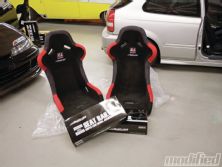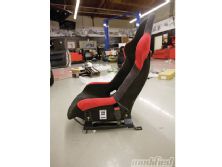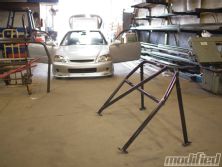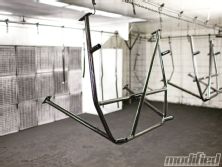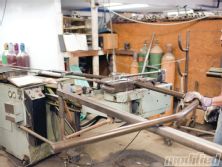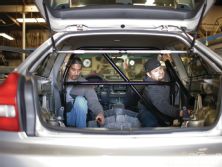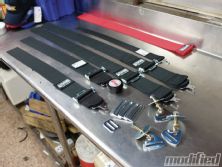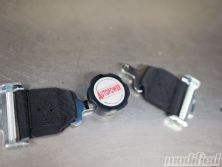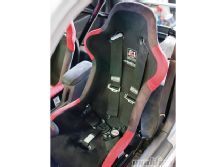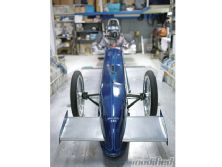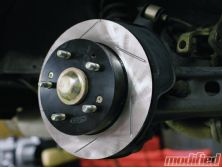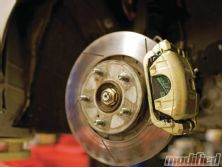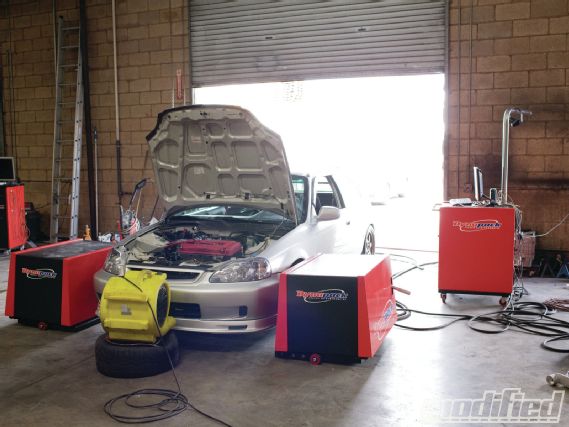 | 1998 Honda Civic - Better, Stronger & (Hopefully) Faster - Project Civic
| 1998 Honda Civic - Better, Stronger & (Hopefully) Faster - Project Civic
In the last installment of Project Civic, I hit the track and encountered a bit of bad luck in the form of a blown head gasket. At that point, I had had enough fun on track that the idea of trying to keep my Civic as a street-friendly car was pretty much an afterthought. All I want to do with this car is track it, because there’s so much more fun to be had that way! Problem is, with racing comes mechanical problems. Alas! I found myself making another long list of things that needed to change on the car, things that will make the overall driving experience easier, safer and more enjoyable, while still being (barely) legal to drive on public roads.
First things first, the Civic was in need of a re-tune after the motor had been apart. My car’s last tune was in Oregon (where the pump gas is 93 octane versus the 91 octane that currently plagues California), and we had reason to believe the motor was pinging and running too lean, problems that are amplified exponentially in a stressful track-driving situation. I headed down to our trusted tuner, Shawn Church of Church Automotive Testing in Long Beach, CA, to give the car a once-over and a fresh map for the Southern California lifestyle my Civic now leads.
Shawn and his guys loaded the car up on their Dynapack for a baseline, and the resulting 209 hp and 154 ft-lbs of torque sounded about right, considering the modifications that have been made since the last dyno session several years ago. After working a bit of magic by adjusting the timing and AFR, the final numbers came in at 221 hp at 7800 rpm and 160 tq at 6100 rpm — not bad for a modestly built 1.8-liter B-series. However, as suspected, the car was leaning out in a pretty severe way. In fact, the stock B16 fuel-delivery system was at maximum flow capacity by about 7000 rpm, making any driving in the very highest range of the motor an unsafe bet. Upon the advice of Mr. Church and in the interest of saving myself a lot of heart- and headache, I added a few more items to the “to do” list in the form of larger injectors, a new fuel pump and a couple other odds and ends to upgrade the fuel system in Project Civic. Stay tuned for more on that in a future article.
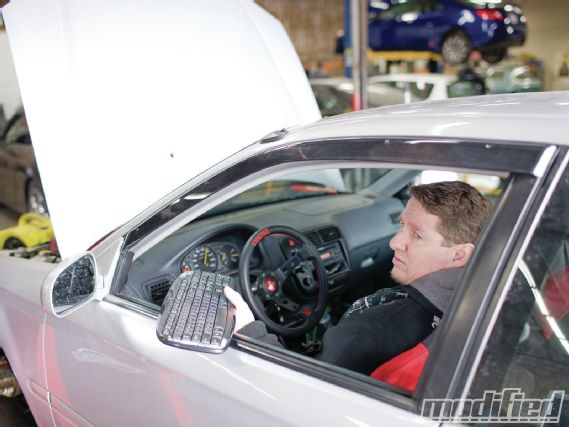 |
The guys at Church Automotive Testing know their way around all sorts of cars. There are Hondas aplenty in the shop, and the whole staff is experienced in tuning many different types of software, including less common applications (such as Chrome, as equipped on Project Civic).
|
The guys at Church Automotive Testing know their way around all sorts of cars. There are Hondas aplenty in the shop, and the whole staff is experienced in tuning many different types of software, including less common applications (such as Chrome, as equipped on Project Civic).
Because the car was running fine everywhere leading up to the 7000-rpm point, higher than I ever get with normal street driving, I felt the downtime spent waiting for the fuel system parts would be well spent looking into upgrading the interior in search of improved driving feel, seat position and, most importantly, safety. I picked up a smaller-diameter deep-dish steering wheel from Vertex, and when paired with a Splash Sports steering hub, these two mostly aesthetic changes make a big difference in the overall feel driving the car — it feels more nimble and easy to control with precision.
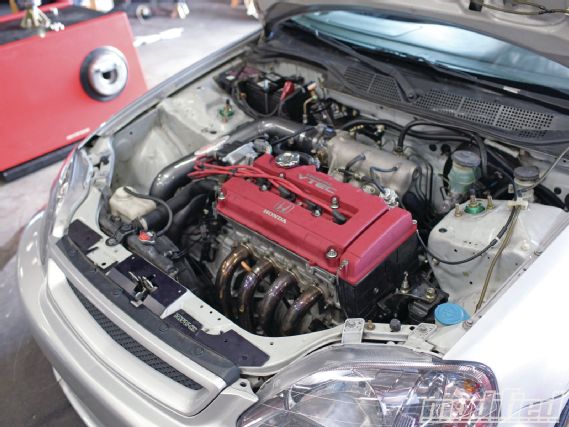 |
Getting ready to hop on the dyno. The newest additions to the bay include a fresh head gasket, 70mm custom-bored throttle body and ported intake manifold (courtesy of Maxbore.com) and a fresh load of Redline 5W30 synthetic motor oil.
|
Getting ready to hop on the dyno. The newest additions to the bay include a fresh head gasket, 70mm custom-bored throttle body and ported intake manifold (courtesy of Maxbore.com) and a fresh load of Redline 5W30 synthetic motor oil.
I turned to Buddy Club for an upgrade in the seating department. Offering a variety of seats and the widely liked Super Low Down seat rails, Buddy Club was kind enough to provide me with a set of rails and its P1 Limited Edition buckets seats. The fit and finish of these seats is really impressive, especially considering the low price point, and another nice thing is these seats are offered in two sizes. I went with the wider of the two, which contours nicely with my 36-inch waist and broad shoulders. I highly recommend sitting in a few different seats before buying anything online; figure out what fits snugly, but not uncomfortably, and purchase accordingly. Paired with the Super Low Down seat rails, the new seating position was (not surprisingly) much lower than with my previous OEM seats, which is beneficial for a few reasons. First off, the lowered center of gravity improves stability. Even though it may seem like splitting hairs, every bit really does help — my new seating position is just about as low as I can go. Secondly, the position of my upper torso relative to the steering wheel and gear selector is improved by sitting lower in the cabin, making it easier to reach everything and therefore allowing me to concentrate more on driving.
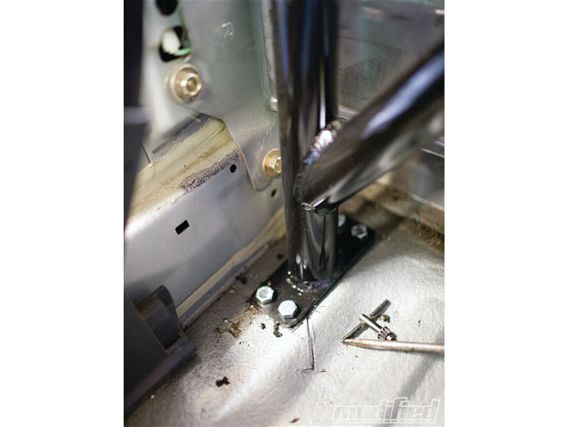 |
1998 Honda Civic - Better, Stronger & (Hopefully) Faster - Project Civic
|
1998 Honda Civic - Better, Stronger & (Hopefully) Faster - Project Civic
At this point, I knew I needed to address one more area of concern if I planned to put in serious time on the track: safety. Autopower Industries is a San Diego–based racing company, specializing in rollbars, rollcages, custom harnesses and other safety equipment for all types of vehicles. Owner Rick White invited me to bring Project Civic down to his shop for a fitment of one of the company’s well-known 4-point rollbars and fitment of a custom 5-point safety harness.
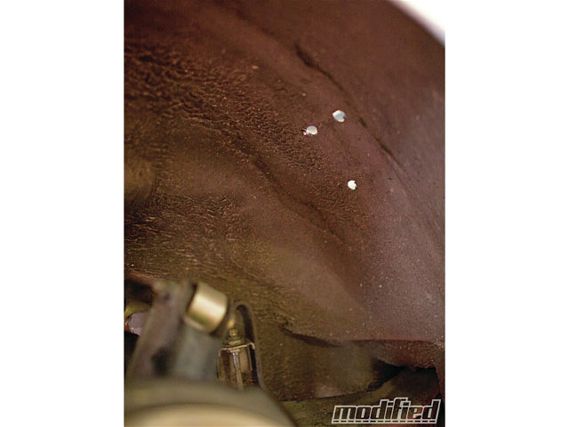 |
1998 Honda Civic - Better, Stronger & (Hopefully) Faster - Project Civic
|
1998 Honda Civic - Better, Stronger & (Hopefully) Faster - Project Civic
As soon as I pulled up to the shop, I knew I was in for a real treat. Rick’s shop is a wonderful collection of tools, materials and a knowledgeable staff of welders, fabricators and installers. Autopower makes everything it sells in-house, where each cage or rollbar is welded by hand, and each harness is hand-stitched. Rick is an old school hot-rodder and land-speed racer, so he’s no stranger to the importance of safety in motorsports. The most commonly used applications Autopower fills are for Miata, Mustang and Civic, but one look around the shop and you’ll instantly understand that when they say they can make anything, they do mean anything.
The fitment of Autopower’s 4-point rollbar for my ’96–00 Honda Civic is superb. Although minor cutting of interior panels is required, it’s only two small holes in the rear plastic for the rear bars to pass through, and two small cuts in the carpet for the same reason. Rick prefers to install rollbars and rollcages in his shop (to eliminate possible errors an inexperienced installer may encounter), however, it’s possible to do it yourself, given the proper tools and plenty of patience. Autopower Street rollbars generally allow the retention of rear seats and reclineable seat range of motion, but be sure to consult the company’s website for a specific listing for your vehicle.
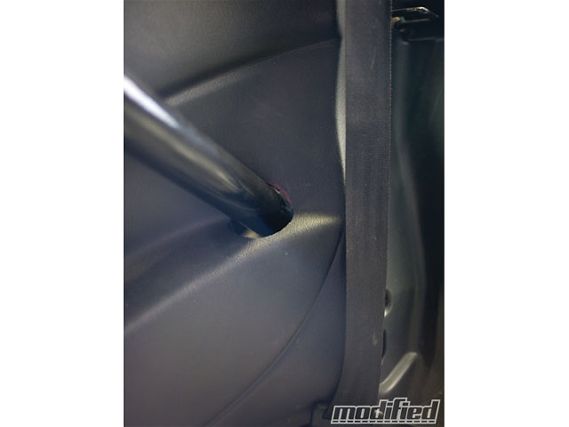 |
1998 Honda Civic - Better, Stronger & (Hopefully) Faster - Project Civic
|
1998 Honda Civic - Better, Stronger & (Hopefully) Faster - Project Civic
Once the bar was in, Rick and I worked to find the correct harness sizing for my seating position. It’s important that the harness fit snugly across the lap and groin area; in the event of an accident, the last thing you want is to be floating around inside your harness. Also note that the factory seatbelts are also retained — Rick says they’re adequate for street driving.
Since the Buddy Club seats aren’t FIA certified, it’s necessary to run a seat back brace in most forms of sanctioned racing. I will address this in the future as the path of Project Civic becomes clearer. For now, the new fuel system, a set of gauges to monitor engine parameters and a possible upgrade in the suspension department are what faces me more immediately. Stay tuned!
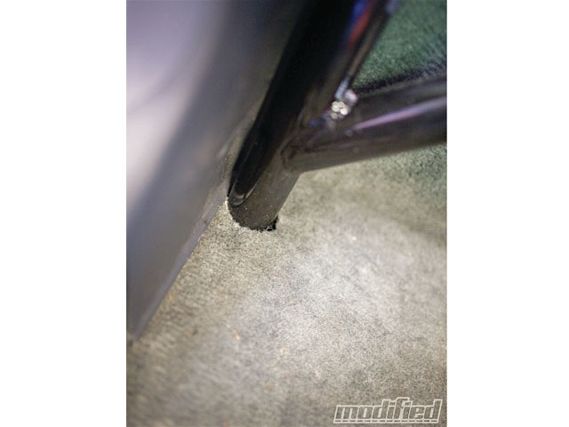 |
1998 Honda Civic - Better, Stronger & (Hopefully) Faster - Project Civic
|
1998 Honda Civic - Better, Stronger & (Hopefully) Faster - Project Civic
Slow Your Roll, Homeboy!
The front brake calipers on Project Civic were in pretty bad shape — a ripped rubber boot and poor paint condition was reason enough for a set of rebuilt OEM calipers, courtesy of Centric Parts. Rear slotted rotors from StopTech should help improve performance, and the new Club Racer pads from Project Mu are supposed to have more bite than the last set of pads I tried. I retained the Mugen Active Gate front rotors because they’re not worn out or in need of replacement.
Sourcebox
Church Automotive Testing
Dyno Tune
home.earthlink.net/~spchurch/
Centric Parts
Rebuilt Brake Calipers
centricparts.com
Project Mu
Club Racer Brake Pads
mackinindustries.com
StopTech
Slotted Brake Rotors
stoptech.com
Splash Sports
Steering Wheel Hub
more-japan.com
Vertex
330mm Steering Wheel
vertex-usa.com
Buddy Club
P1 Limited Edition Bucket Seats, Super Low Down Seat Rails
buddyclub.us
Autopower Industries
Roll bar, 5-point Racing Harness
autopowerindustries.com

